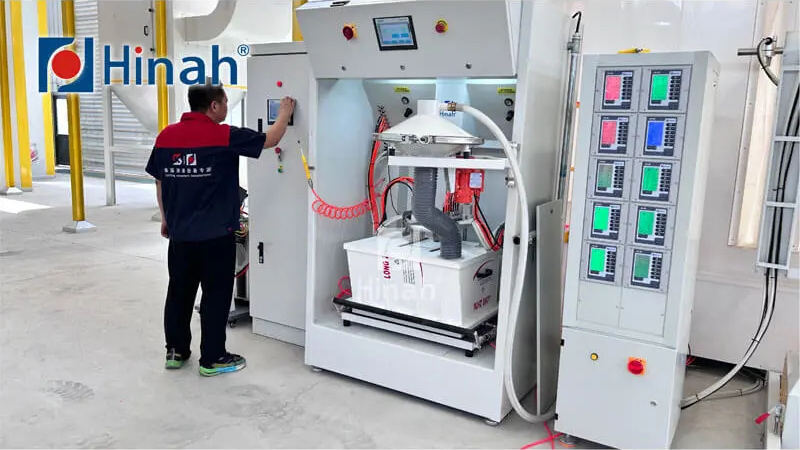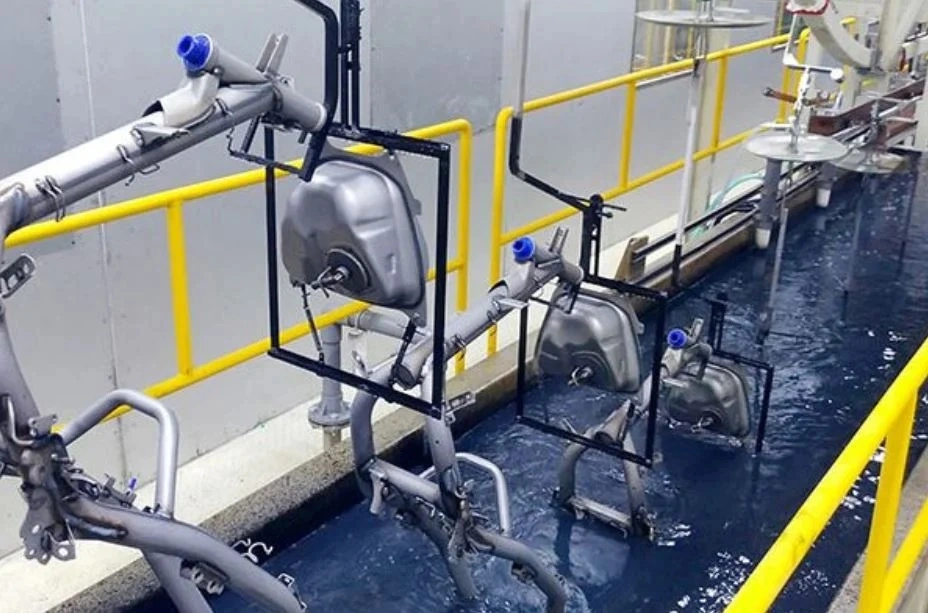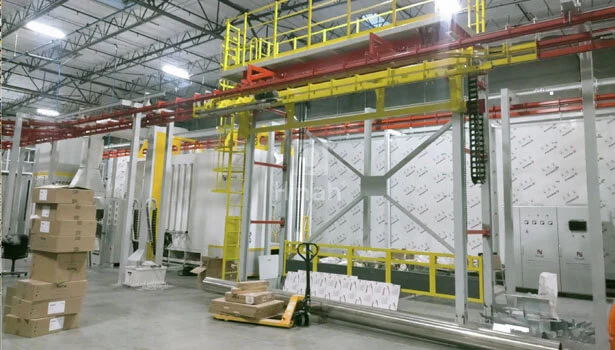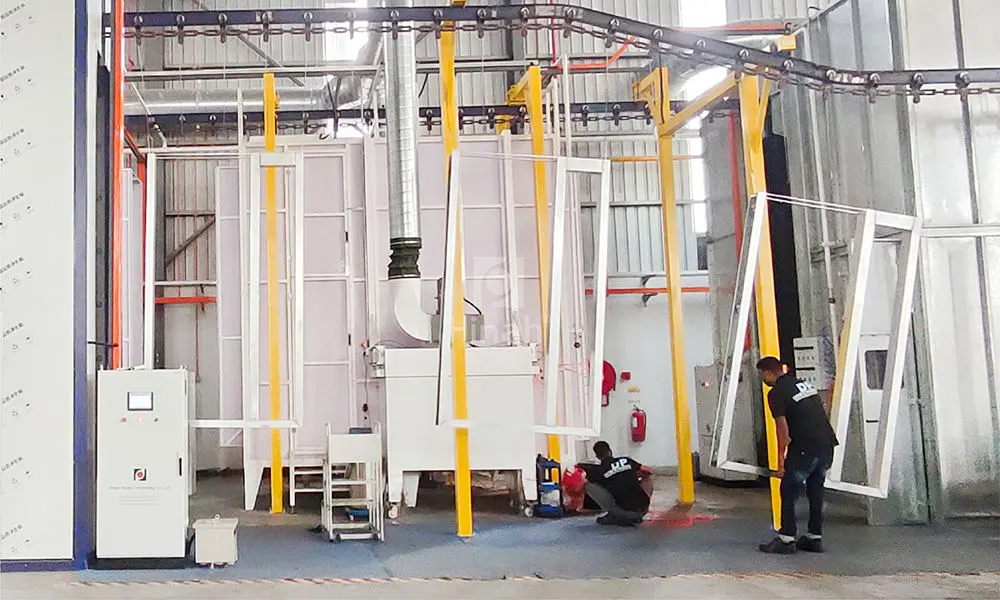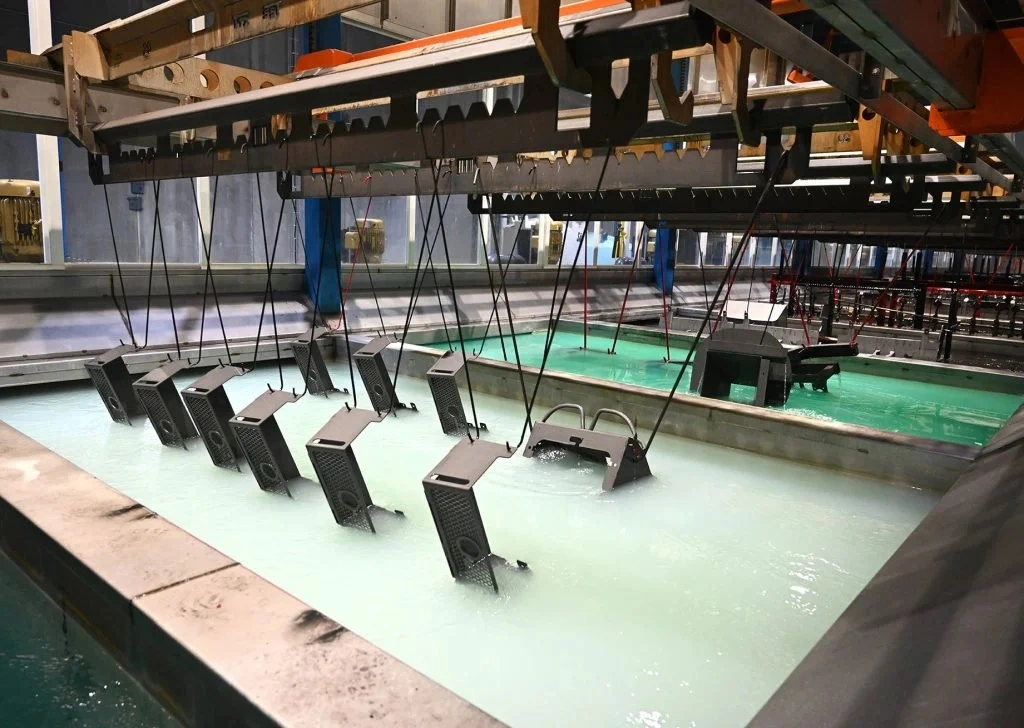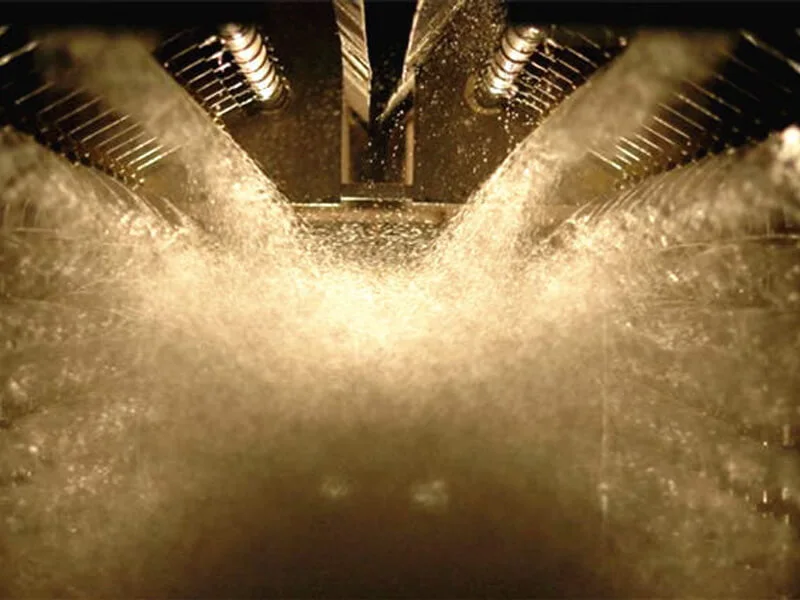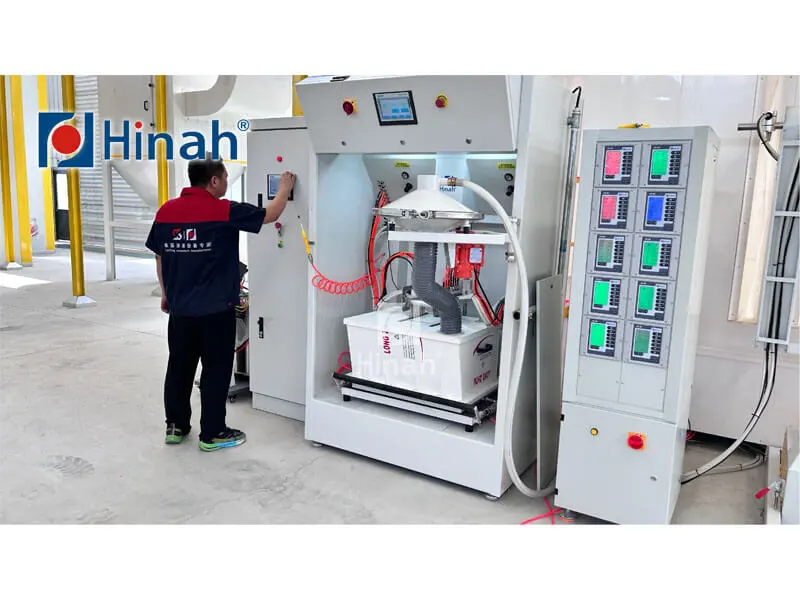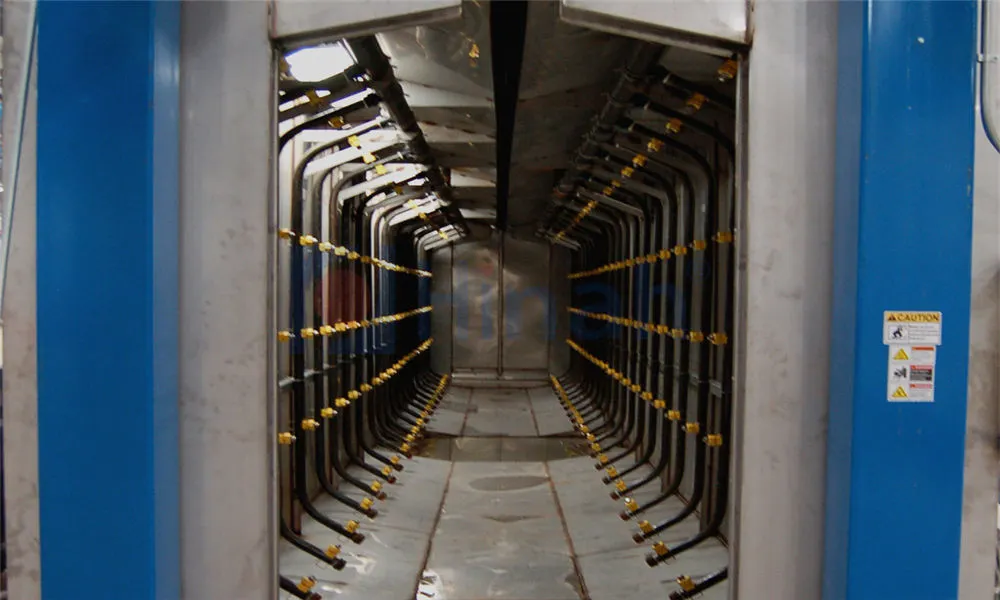In the world of industrial finishing, efficiency, consistency, and quality are paramount. At the heart of any successful coating operation lies a critical piece of infrastructure: the paint line conveyor. This system is the central nervous system of the finishing process, moving parts through various stages—from pre-treatment and painting to curing and cooling—with precision and reliability. A well-designed conveyor system directly impacts throughput, finish quality, and operational costs.
This article delves into the intricacies of paint line conveyor systems, exploring their key components like chains and hooks, examining popular types such as overhead conveyor system designs and powder coating conveyor setups, and outlining the common problems that maintenance teams must vigilantly manage.
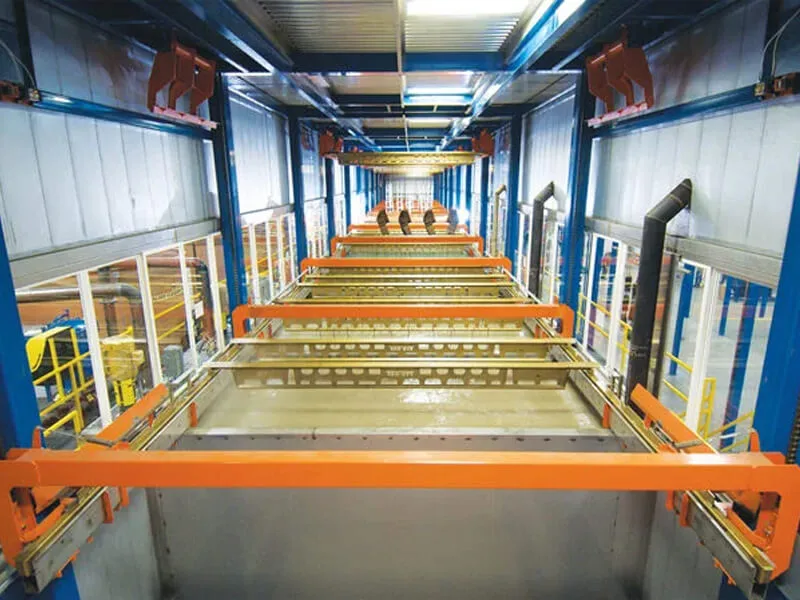
What is a Paint Line Conveyor System?
A paint line conveyor system is a continuous mechanical handling apparatus designed to transport products through an industrial finishing process. It is engineered to handle specific environmental conditions, including high heat from curing ovens, exposure to chemicals during pre-treatment, and the particulate-heavy atmosphere of spray booths. These systems are not one-size-fits-all; they are highly customized to the weight, size, and geometry of the parts being painted, as well as the layout of the facility and the type of coating being applied.
The primary purpose of these systems is to ensure a smooth, consistent, and uninterrupted flow of parts. This minimizes handling, reduces the risk of damage, and allows for a controlled, repeatable process that is essential for achieving a uniform finish on every single product.
Core Components of a Paint Line Conveyor
The efficiency of the entire operation hinges on the seamless interaction of its core components. Understanding each part is key to effective operation and maintenance.
The Backbone: Paint Line Conveyor Chain
The paint line conveyor chain is the literal driving force of the system. These are not standard roller chains; they are heavy-duty, engineered chains designed to carry significant loads and withstand harsh conditions. Common types include:
Chain Types: Common designs include rivetless chain (easy to clean and maintain), enclosed track chain (which protects the load-bearing surfaces from contamination), and standard pintle chain.
Durability: They are typically manufactured from carbon or stainless steel and are often coated or plated to resist corrosion from chemicals and moisture.
Function: The chain engages with the drive motor, moving the entire system forward, and provides the attachment points for the carriers that hold the product.
The Interface: Paint Line Conveyor Hooks
Paint line conveyor hooks (and their associated fixtures, racks, and carriers) are the critical interface between the product and the moving chain. Their design is paramount.
Customization: Hooks and racks are almost always custom-designed for the specific part being painted to ensure a secure fit and optimal orientation for coating. This minimizes touch points and ensures even coverage.
Material: They are made from high-tensile strength steel and are designed to be repeatedly exposed to high curing temperatures without warping.
Maintenance: Hooks require regular cleaning and stripping of built-up coating to maintain electrical grounding for electrostatic processes (crucial for powder coating) and to prevent contamination of new parts.
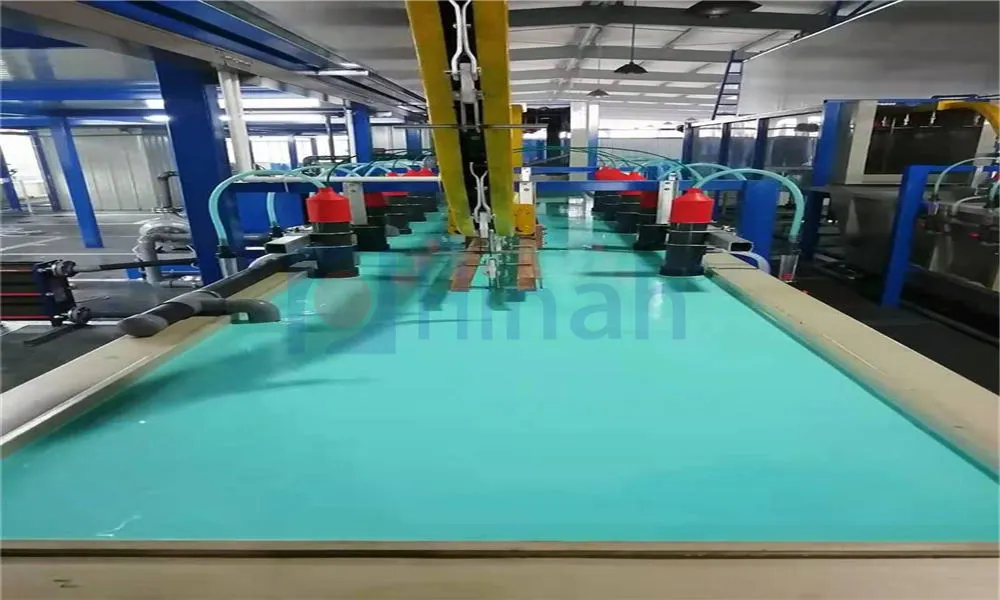
Popular Types of Paint Line Conveyor Systems
While there are several configurations, two dominant types are used across the industry.
The Workhorse: Overhead Conveyor System
An overhead conveyor system is the most common type found in painting facilities. In this design, the chain track is installed high above the floor, and products are suspended from it. This configuration offers significant advantages:
Floor Space Savings: By utilizing overhead space, the floor remains clear for personnel, equipment, and part staging.
Optimized Process Flow: It easily navigates through vertical loops and around corners, creating an efficient path through pre-treatment spray tunnels, ovens, and cool-down zones.
Versatility: It can handle a wide range of part sizes and weights, from small automotive components to large tractor assemblies.
The overhead conveyor system is exceptionally well-suited for both liquid and powder coating applications, making it the default choice for many manufacturers.
The Specialist: Powder Coating Conveyor
A powder coating conveyor is specifically engineered to meet the unique demands of the powder coating process. While often an overhead conveyor system, it has specific requirements:
Grounding: The entire system, especially the paint line conveyor hooks and racks, must be meticulously designed to provide a perfect electrical ground. This is essential for the electrostatic application of powder, where the charged powder particles are attracted to the grounded part.
Cleanliness: The system must be designed to minimize areas where loose powder can accumulate and later fall onto finished parts, causing contamination.
Oven Transition: The design must manage the thermal expansion of the chain as it moves from the ambient spray booth into the high-temperature curing oven.
Common Problems and Maintenance Challenges in Paint Line Conveyors
Even the most robust systems encounter issues. Proactive maintenance is the key to preventing costly downtime and quality defects.
Chain Wear and Elongation: The paint line conveyor chain is under constant stress, leading to wear on the pins and bushings. This causes the chain to elongate over time. Excessive elongation can lead to poor engagement with the drive motor, jerky movement, and even chain derailment. Regular inspection and tension monitoring are crucial.
Poor Grounding (for Powder Coating): This is the number one cause of quality issues in powder coating. Buildup of coating on paint line conveyor hooks and racks acts as an insulator, breaking the essential electrical ground. This results in poor powder transfer efficiency (waste) and uneven film thickness. A strict hook stripping and maintenance schedule is non-negotiable.
Hook and Fixture Breakdown: Hooks and fixtures bear the weight of the product and endure thermal cycling. They can fatigue, bend, or break. A failed hook can lead to a dropped product, causing damage and potentially halting the entire line. Regular inspection for wear, distortion, and cracking is essential.
Lubrication Issues: The conveyor chain requires proper lubrication to minimize wear and run smoothly. However, using the wrong lubricant or over-lubricating can be disastrous. Excess lubricant can drip onto parts below, causing coating rejects, or attract dust and powder in the environment, creating a gritty paste that accelerates wear.
Contamination and Cleanliness: Dust, overspray, and other contaminants can build up on the track, chain, and especially inside enclosed tracks. This accumulation can interfere with the movement of trolleys and wheels, increasing drag on the motor and leading to premature failure. Regular cleaning schedules for the entire paint line conveyor system are vital.
Drive Motor and Control Problems: The drive motor and its control system are the heart of the operation. Electrical failures, bearing wear in the motor, or issues with the variable frequency drive (VFD) can lead to inconsistent line speeds or complete stoppages. Predictive maintenance, such as thermal imaging and vibration analysis, can help catch these issues early.
Track and Rail Misalignment: Over time, the supporting structure of the conveyor can shift or settle. This can cause misalignment at the joints between sections of track. Misalignment creates rough transitions, causing jerky part movement, increased wear, and a higher risk of derailment.
A paint line conveyor is far more than just a simple moving track; it is a complex, integrated paint line conveyor system that demands careful design, meticulous installation, and a disciplined maintenance regimen. From the robust paint line conveyor chain that powers it to the meticulously designed paint line conveyor hooks that hold the products, every component plays a vital role.
Choosing the right system, whether a versatile overhead conveyor system or a specialized powder coating conveyor, is a strategic decision. By understanding the common challenges—from chain elongation and grounding issues to contamination—operations managers can implement proactive maintenance strategies. This ensures the conveyor system remains a reliable asset, delivering parts smoothly through the process and laying the foundation for a flawless, high-quality finish, batch after batch.


